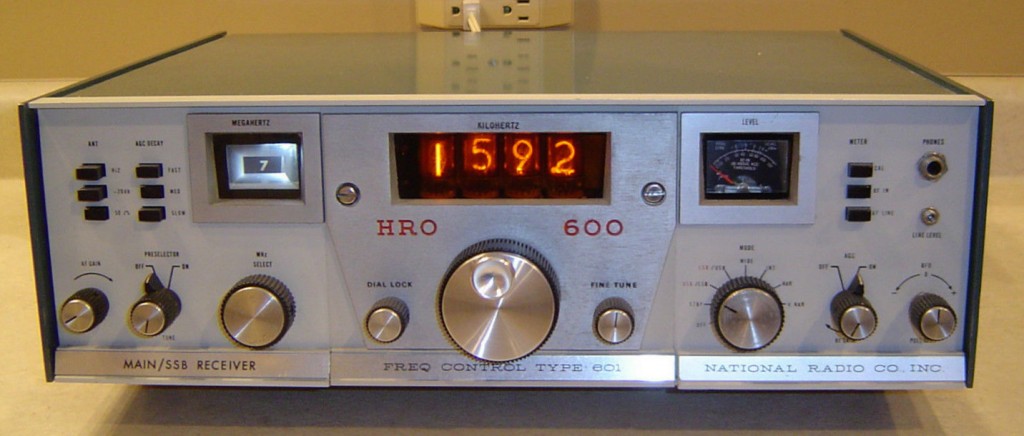SWLing Post contributor, Dan Robinson, writes:
Wow . . . a huge, amazing rarity…this is perhaps the rarest of radios, the HRO-600.
It is almost never seen on the used market and when it is, it is usually in non-operational condition. In its day it was quite advanced, though now, a Tecsun could run rings around it, and it uses NIXIE tubes…good luck obtaining those…anyway for anyone who has never seen one in this condition, and for everybody, here it is…
Wow–I thought that receiver might sit on eBay for a while, but it sold for $3,895 US only moments after Dan spotted it.
Assuming this listing will eventually disappear from eBay, I downloaded a few more photos:
I really enjoy tips like this from Dan. While rare radios like the HRO 600 are well beyond my budget, it’s so much fun to learn about them. Indeed, I had no idea HRO made a receiver that used Nixie tubes!
What is a Nixie tube you ask? Per Wikipedia:
“A Nixie tube, or cold cathode display, is an electronic device for displaying numerals or other information using glow discharge.
The glass tube contains a wire-mesh anode and multiple cathodes, shaped like numerals or other symbols. Applying power to one cathode surrounds it with an orange glow discharge. The tube is filled with a gas at low pressure, usually mostly neon and often a little mercury or argon, in a Penning mixture.
Although it resembles a vacuum tube in appearance, its operation does not depend on thermionic emission of electrons from a heated cathode. It is therefore called a cold-cathode tube (a form of gas-filled tube), or a variant of neon lamp. Such tubes rarely exceed 40 °C (104 °F) even under the most severe of operating conditions in a room at ambient temperature. Vacuum fluorescent displays from the same era use completely different technology—they have a heated cathode together with a control grid and shaped phosphor anodes; Nixies have no heater or control grid, typically a single anode, and shaped bare metal cathodes.”
As Dan states, Nixie tubes can be very difficult to source these days. I’m sure the radio collector that purchased this HRO 600 is well aware.
Update: While I don’t know what Nixie tubes the HRO-600 takes, Leeds Radio, has a substantial collection of Nixie tubes at reasonable prices. Click here to browse through the collection. Leeds, by the way, is a fantastic resource for pretty much any sort of tube/valve you may need. Check out this piece on Leeds Radio from WNYC.
I hope someone uploads a video of the HRO-600 in operation; I’ve never seen one in action.
Dan, thanks again for sharing your eBay finds!

